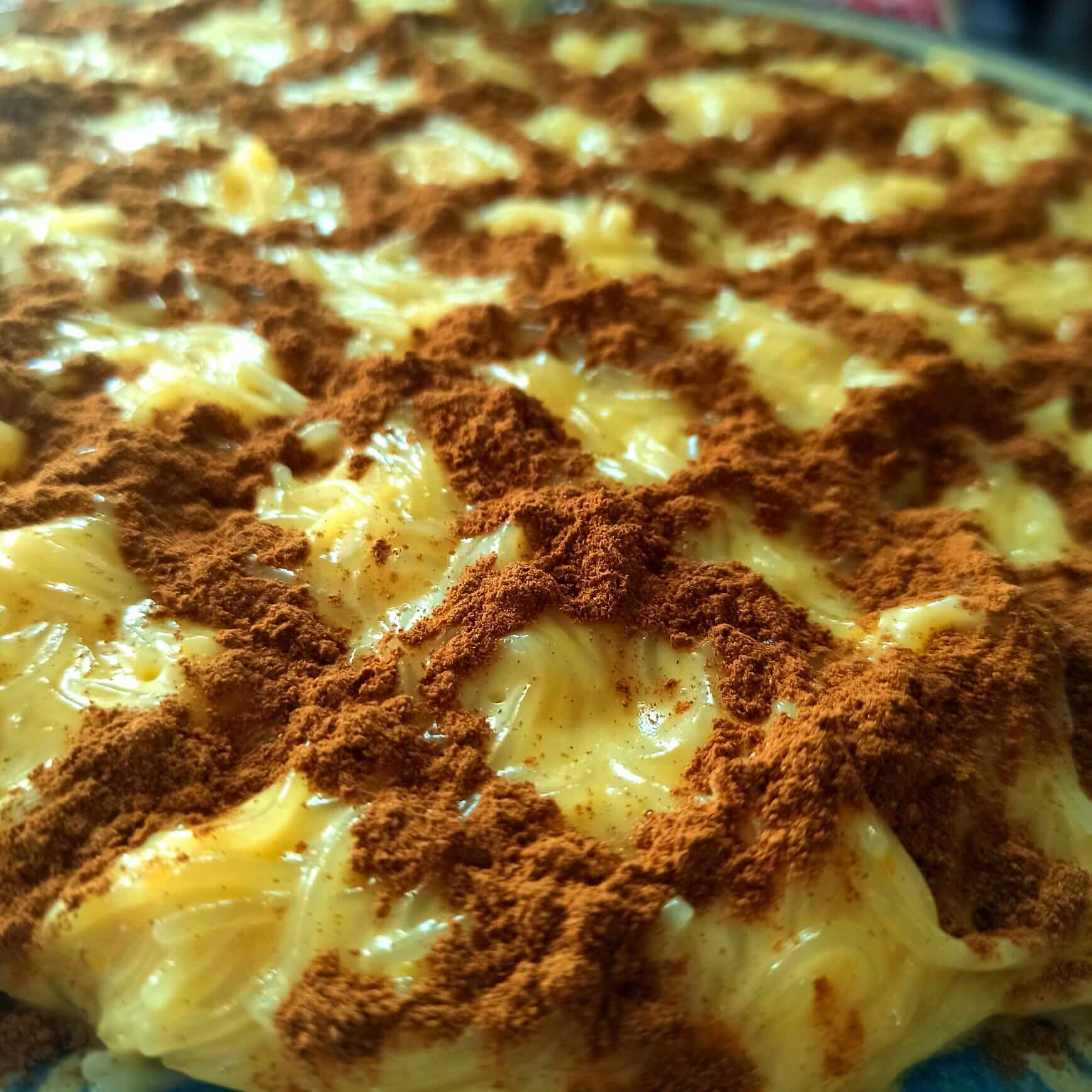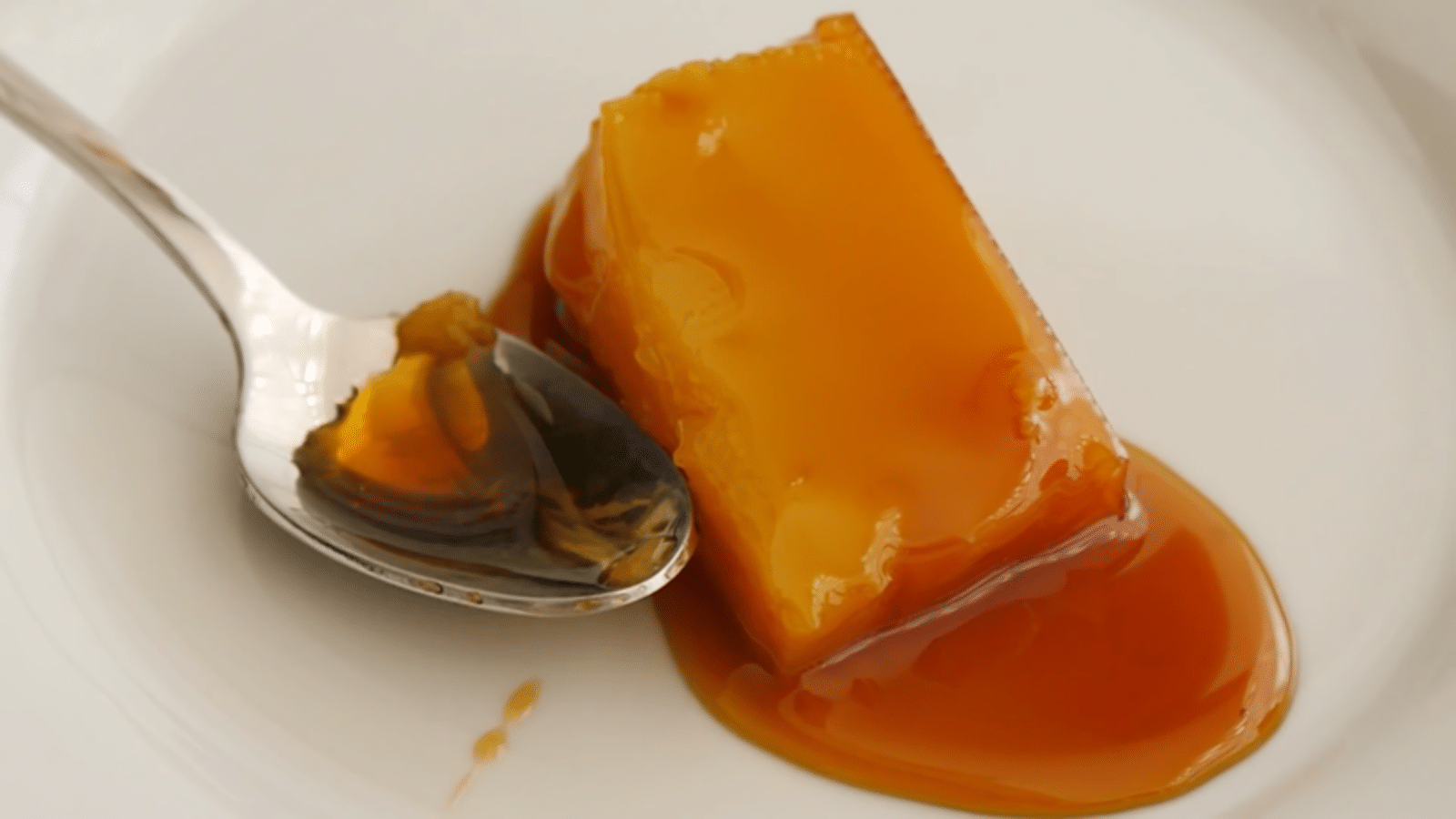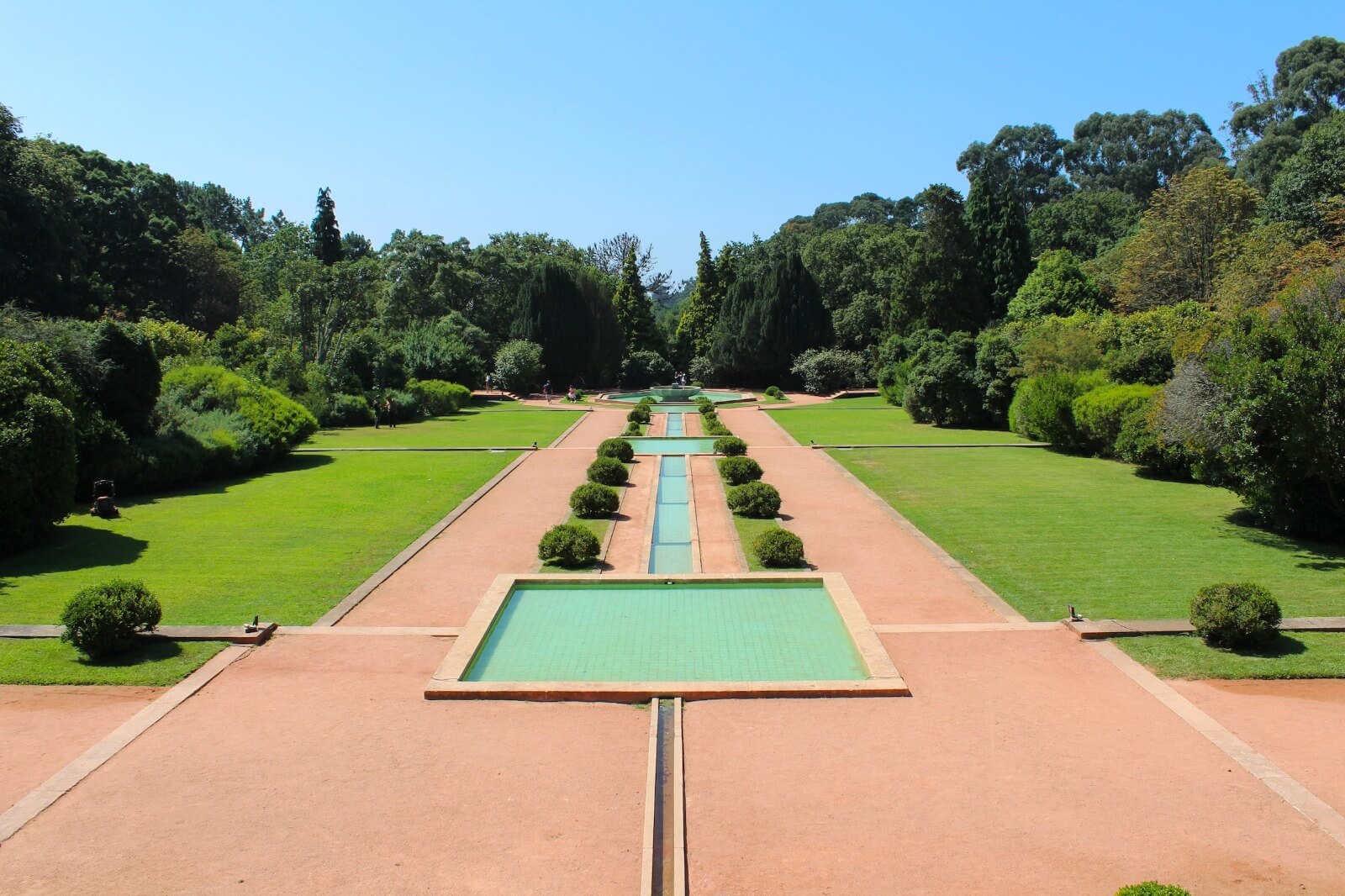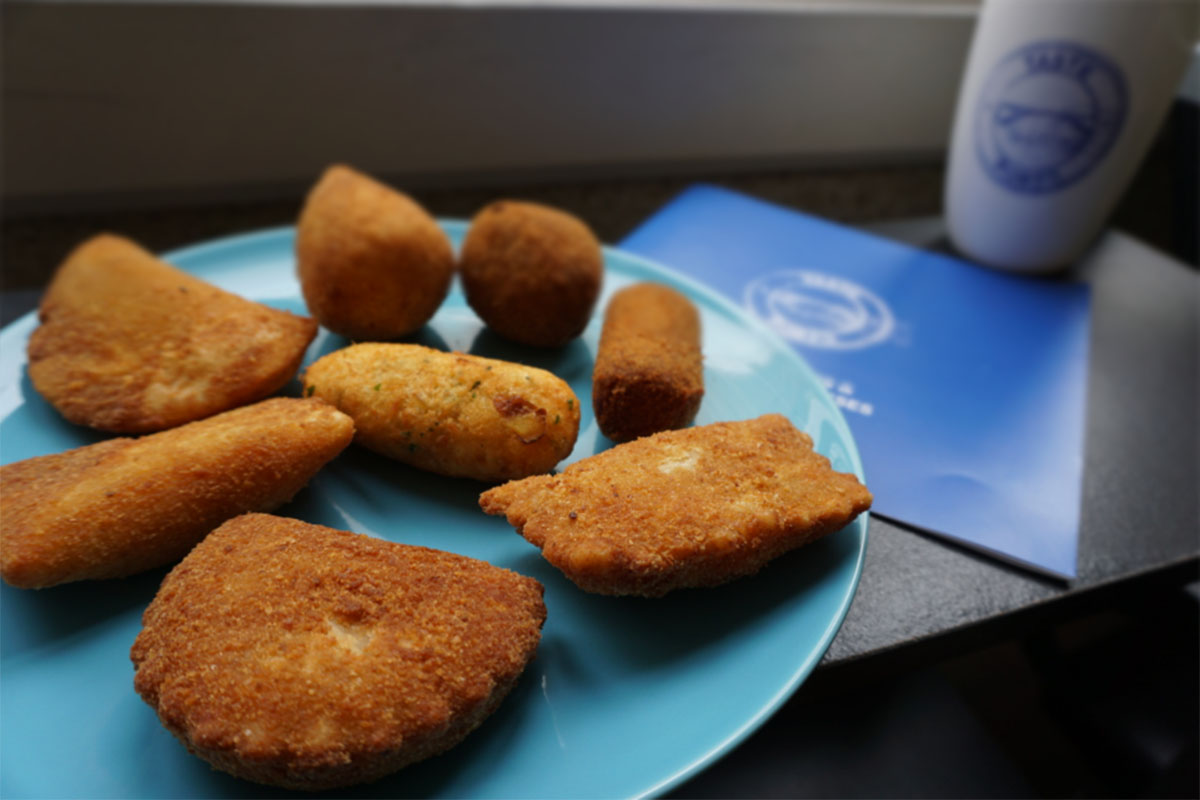
No matter where you travel to in Portugal, you will very likely come across a café or bakery window full of typical savory Portuguese pastries. There are so many and they all look delicious but, how to decide on which to choose? Are they all the same inside? How do I know what is what? Well, we went to the streets again with a difficult mission on our hands: taste and describe as many as we could and share it with you! With this guide, you’ll be able to choose the ones that best fit your tastes!
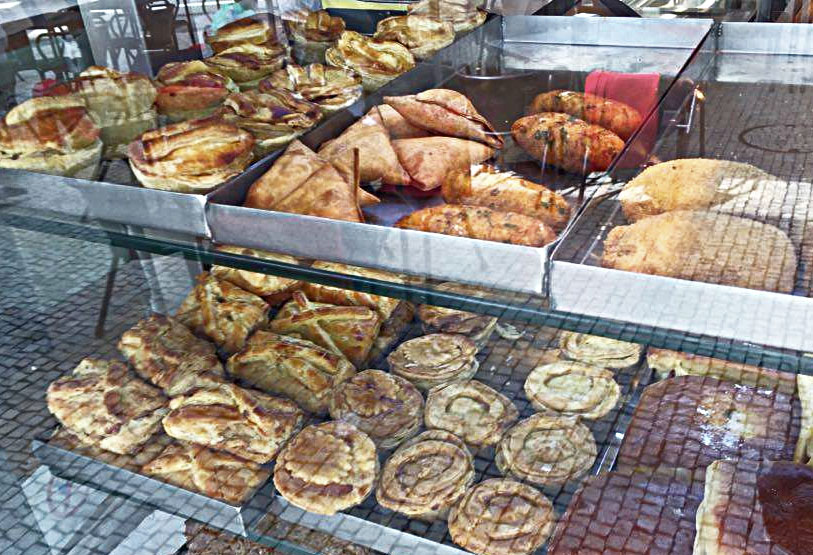
What are they?
We call them pastries, but they can be much more than that. They can be served as a starter, side dish, main course (served with rice), a mid-afternoon snack or even breakfast. So what are these small, versatile treats of deliciousness? These savory pastries can be divided into two general categories:
- Group 1 is defined by its croquette outer layer comprised of dough that has been deep fried and contains either meat, fish or vegetables
- Group 2 is defined by its flaky pastry outer layer that is usually baked and also contains either meat, fish or vegetables
Upon first glance you will notice subtle differences in the shapes of the pastries – this is the most important aspect of this guide. If you walk into a typical and local bakery, there will be no signs distinguishing the veal pastries from the beef ones, instead, that is the job of the shape, to help you know what you are getting. Where this tradition comes from we are not sure, but what we do know is that if you want to eat like a local, keep reading.
Pssst… Join our Food & Drink Tours and discover a side of Porto that most tourists rarely see »
Savory Portuguese Pastries: Group 1
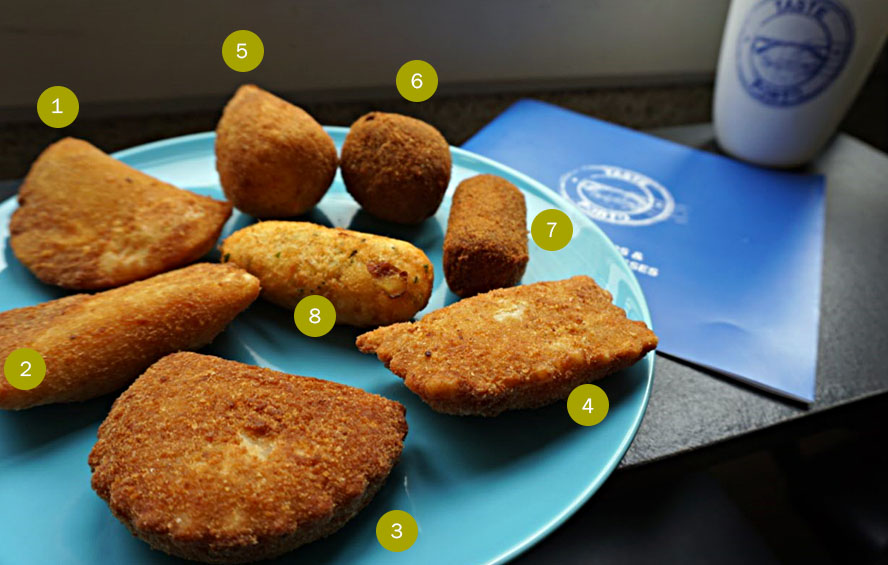
This group contains the pastries that are most similar to one another other, in fact, they all look like little presents of fried dough, however, there are slight differences that will help dicier the pastry code.
- 1. Rissol de Carne / Meat Rissol: Probably the most common savory portuguese pastry, this rissol has minced beef inside and comes in a perfect half-moon shape.
- 2. Rissol de Bacalhau / Codfish Rissol: of course there’s a rissol with codfish inside, this is Portugal after all! This pastry comes in a perfect rectangular shape.
- 3. Rissol de Atum / Tuna Rissol: This one is not so common, but still delicious. You can identify it by the halfmoon shape with little waves on the rounded edge, meant to symbolize the scales of the fish.
- 4. Rissol de Camarão / Shrimp Rissol: This is one of the classics, it’s filled with a shrimp and béchamel mixture. The rectangular shape accompanied with the “fish scales” on the edges will help you easily identify this yummy treat.
- 5. Coxinha de Frango / Chicken Thigh: this is actually a popular appetizer in Brazil, but you can often find it in Portugal. It contains shredded chicken meat and its shape is meant to resemble a chicken leg – I think it looks like a raindrop.
- 6. Croquete de Alheira / Sausage Croquette: This croquette is filled with a traditional portuguese “sausage” named Alheira, which contains game meat, usually veal, duck, chicken, quail or rabbit. This perfect round ball is sure to satisfy you.
- 7. Croquete de Carne/ Beef Croquette: These are cylindrical packets of savoriness are filled with beef.
- 8. Bolinho de Bacalhau / Codfish Cake: If you are in northern Portugal, this is the name people call it, but if you find yourself in central or south Portugal, you’ll notice they call it Pastéis de Bacalhau / Codfish Pastry. This is one of the most typical and traditional savory portuguese pastries. They are usually made from a mixture of potatoes, codfish, eggs, parsley, and onion and then deep fried. This pastry is slightly different in that it does not have a dough casing.
Savory Portuguese Pastries: Group 2
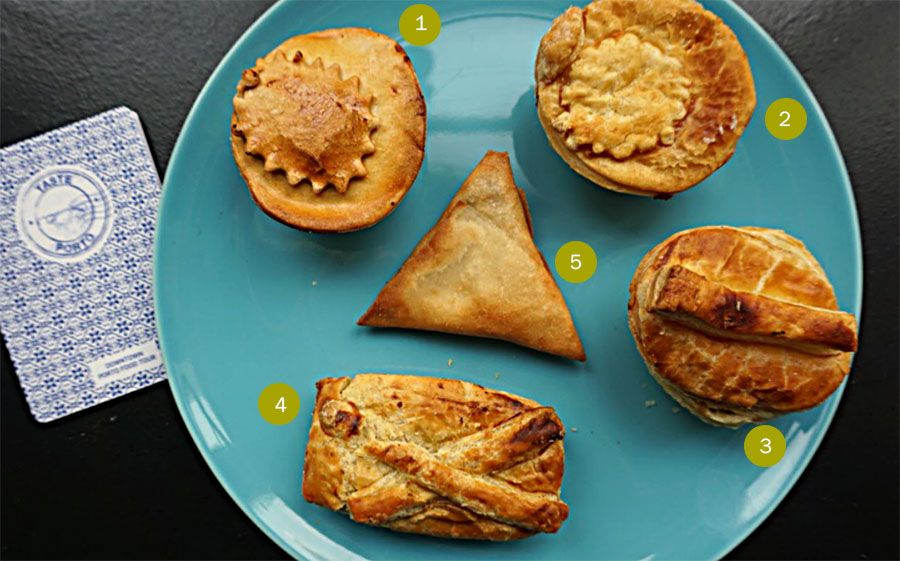
This group of savory pastries looks and tastes a bit different from the previous group. As I mentioned before, this group is generally contained within a flaky crust and is baked instead of fried. But do not be fooled, they are still just as good.
- 1. Empada de Atum / Tuna Pastry: This pastry comes in a cupcake shape and filled with tuna. How do I know that? The design on the top gave it away, it reminds me of waves.
- 2. Empada de Frango / Chicken Pastry: This empada looks similar to the previous one, though it is filled with chicken. How are you to know it is chicken, again it is the design. I have no idea what the design is meant to evoke, all I know is it means chicken.
- 3. Empada de Vegetais / Vegetables Pastry: Don’t think that we forgot about our vegetarian friends out there. There is even an empanada just for you, and you can recognise it by the distinctive single bar along the top of the pastry.
- 4. Empada de Vitela / Veal Pastry: X marks the spot or at least the pastry that contains veal meat.
- 5. Chamuça /Samosa: This is wild card pastry! Samosas are a popular Indian appetizer and even though they aren’t of Portuguese origin, you can find it pretty much anywhere. They arrived in Portugal through the Indo-Portuguese cuisine of Goa, Daman, and Diu, which formerly belonged to the Portuguese State of India. Samosas can be deep fried or cooked in the oven and are usually filled with a mix of potatoes, onions, peas, lentils, and bits of minced beef or chicken and of course spices. There is no way of knowing what a bakery includes in their samosa, so you will just need to ask.
There you have it, your guide to savory Portuguese pastries. It’s impossible for us to include every savory pastry in Portugal, especially because you might find slight variations of the ones presented in this article, but in terms of flavors and ingredients, you are now an expert! Now you can look at any bakery or café window and know exactly what to order and what to expect. Enjoy!
Taste Porto Foodie Team
